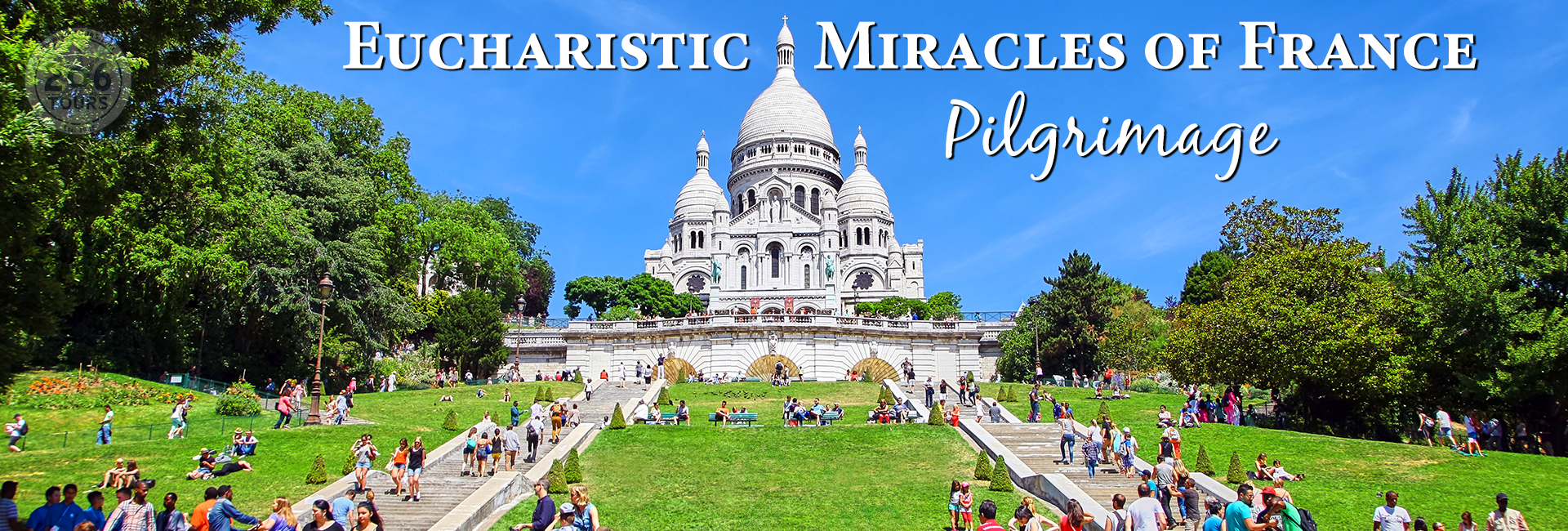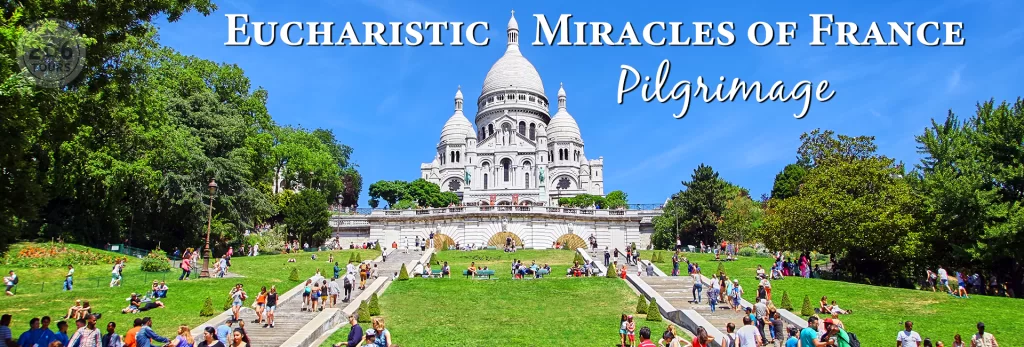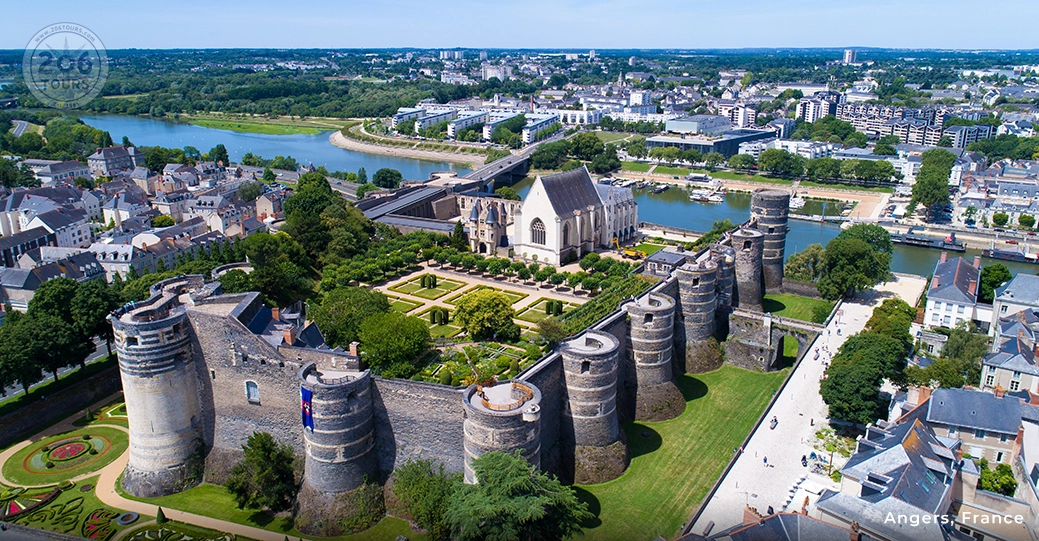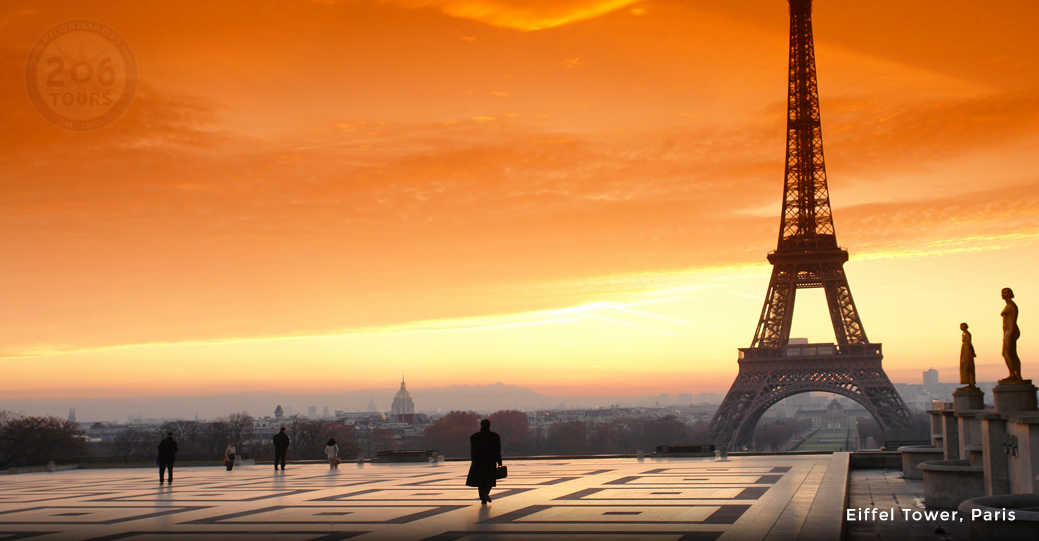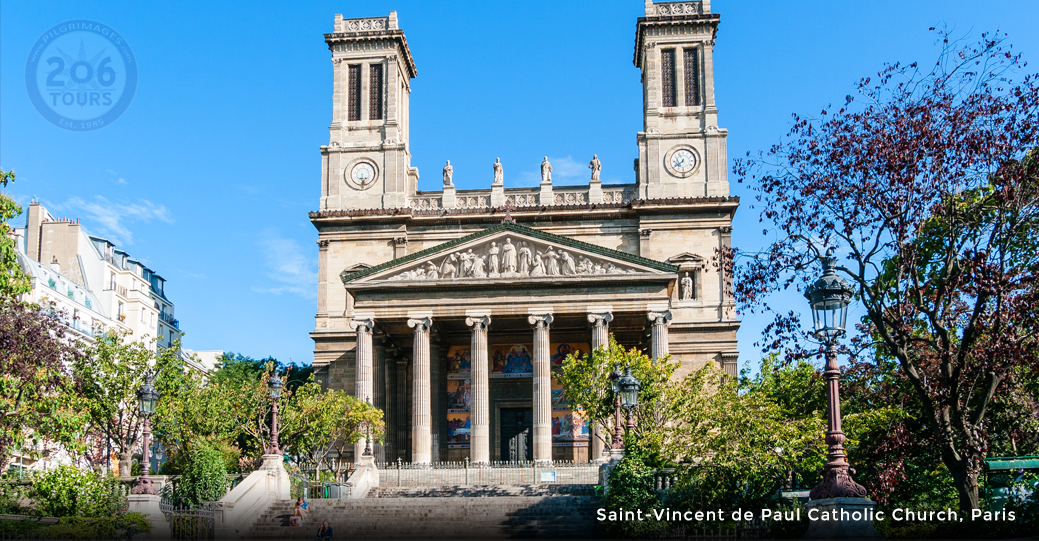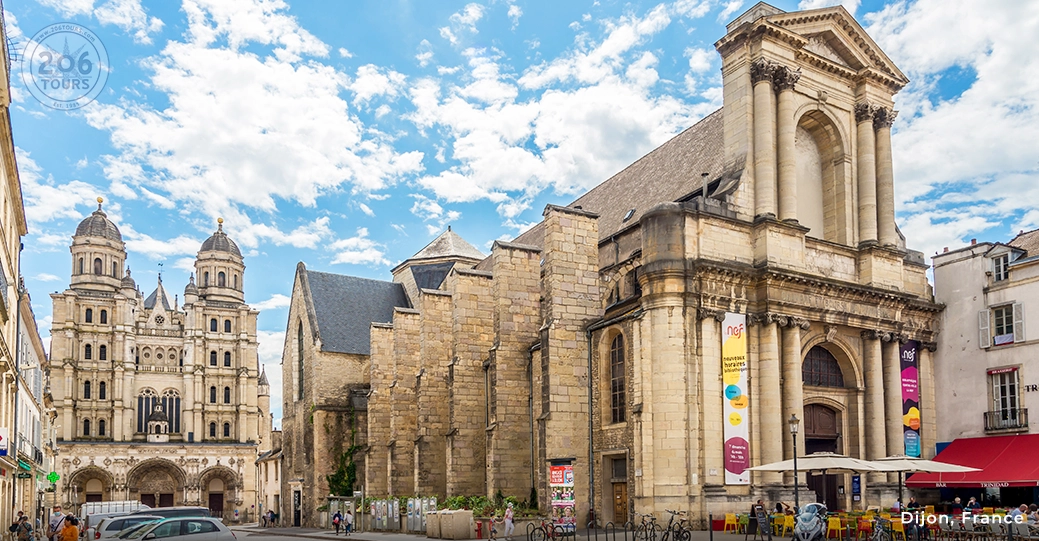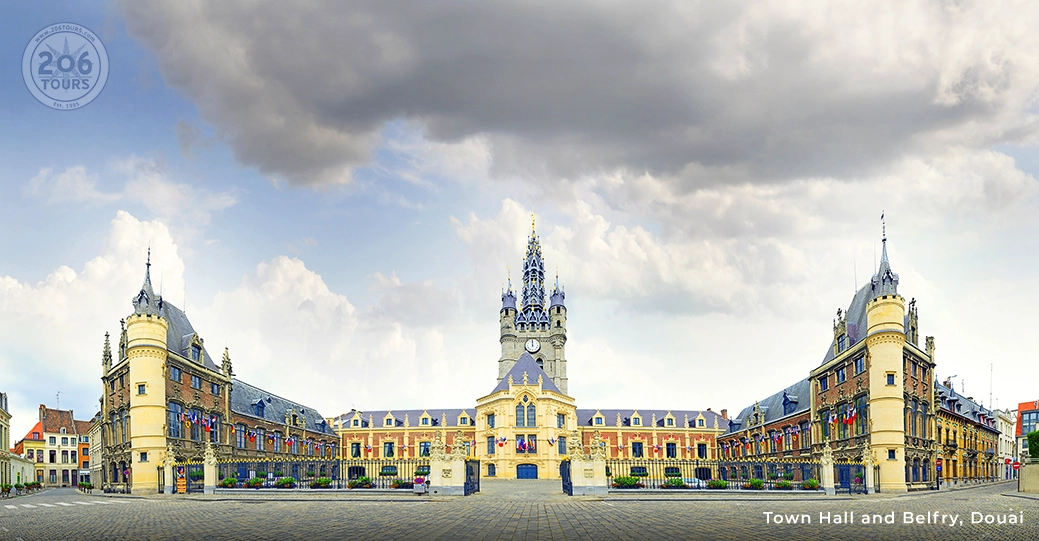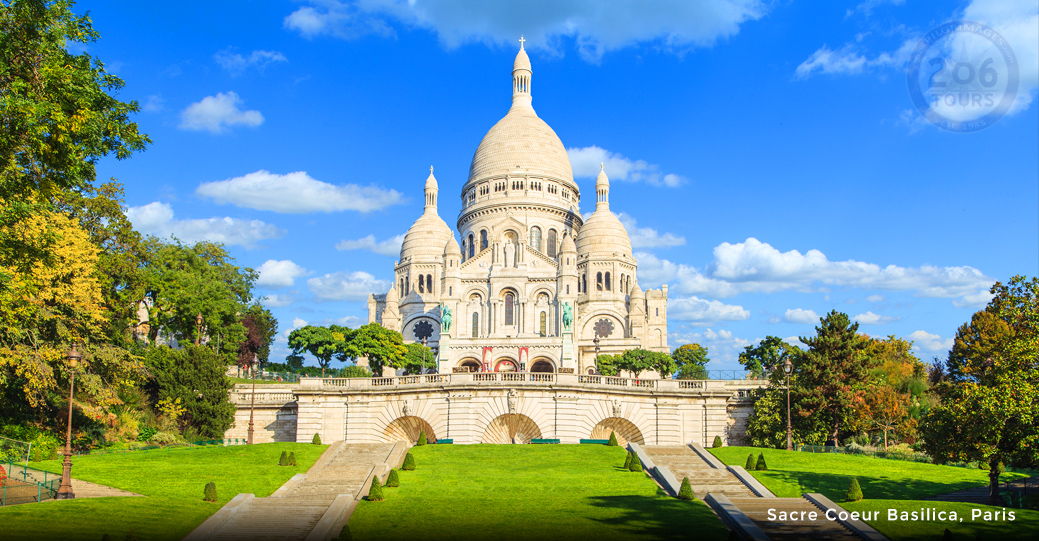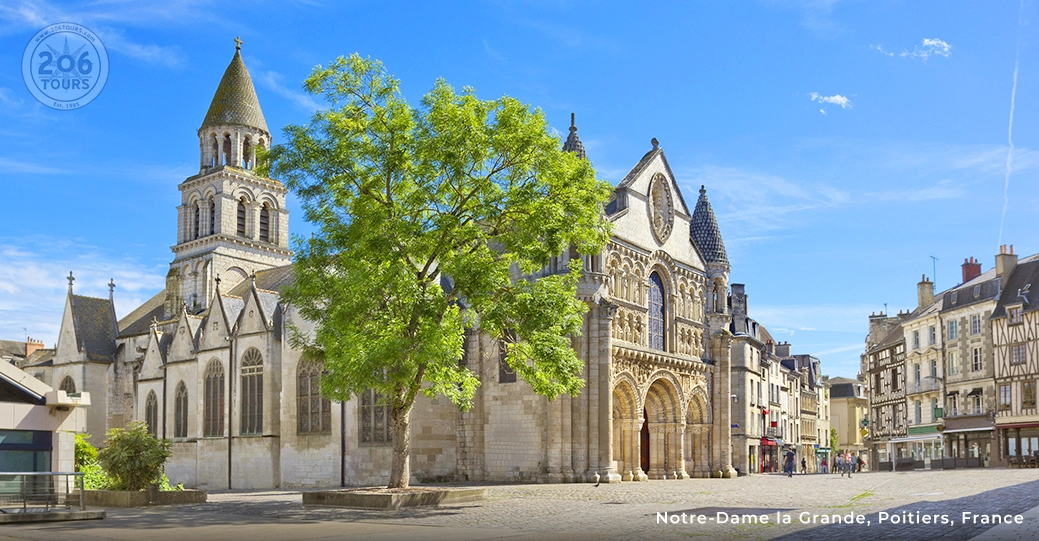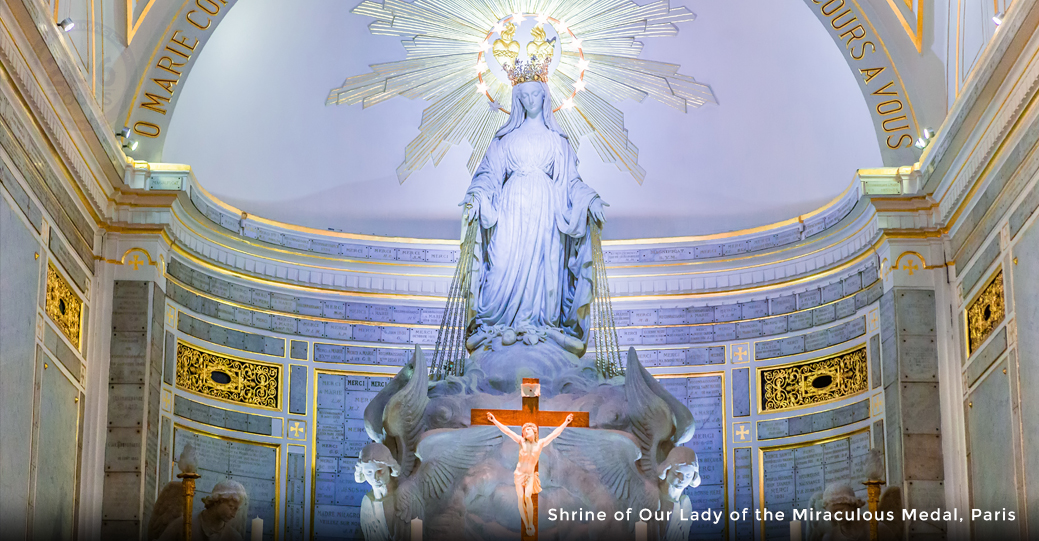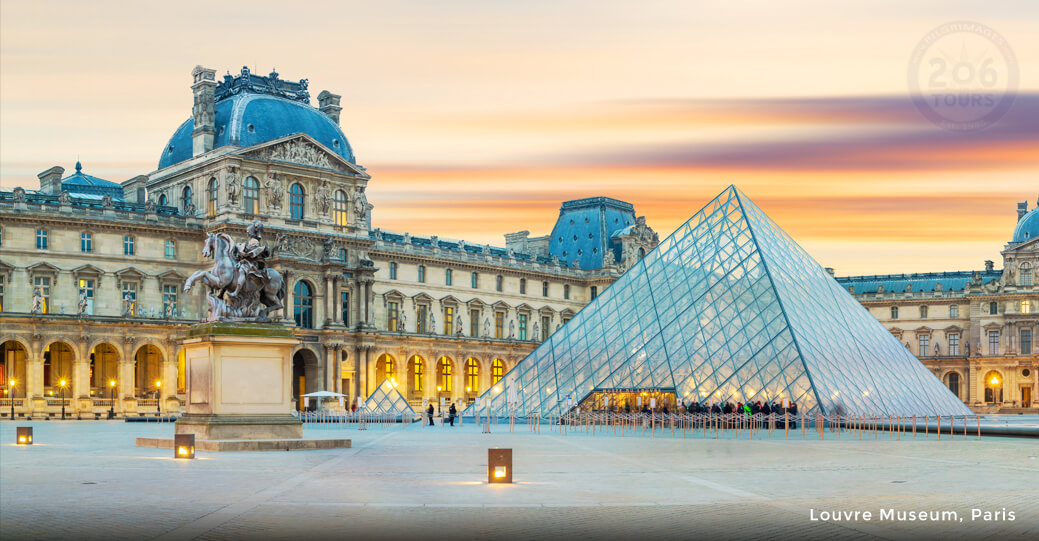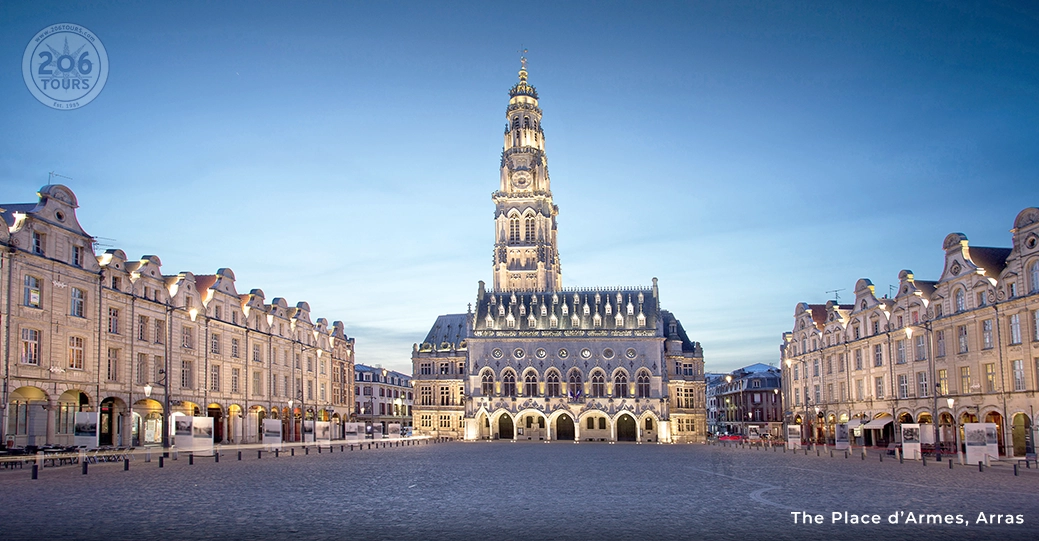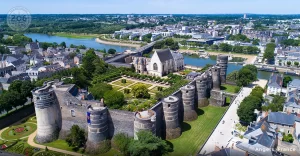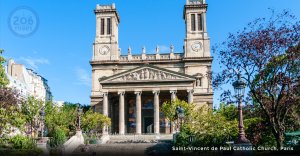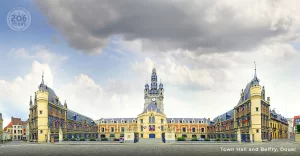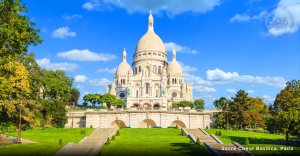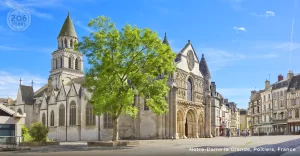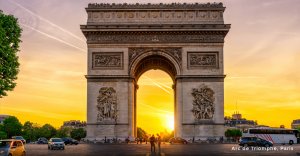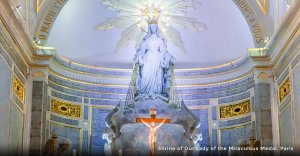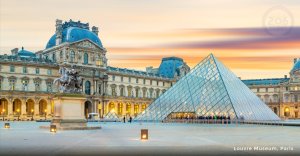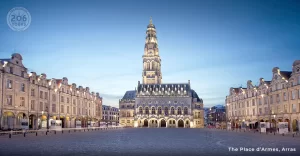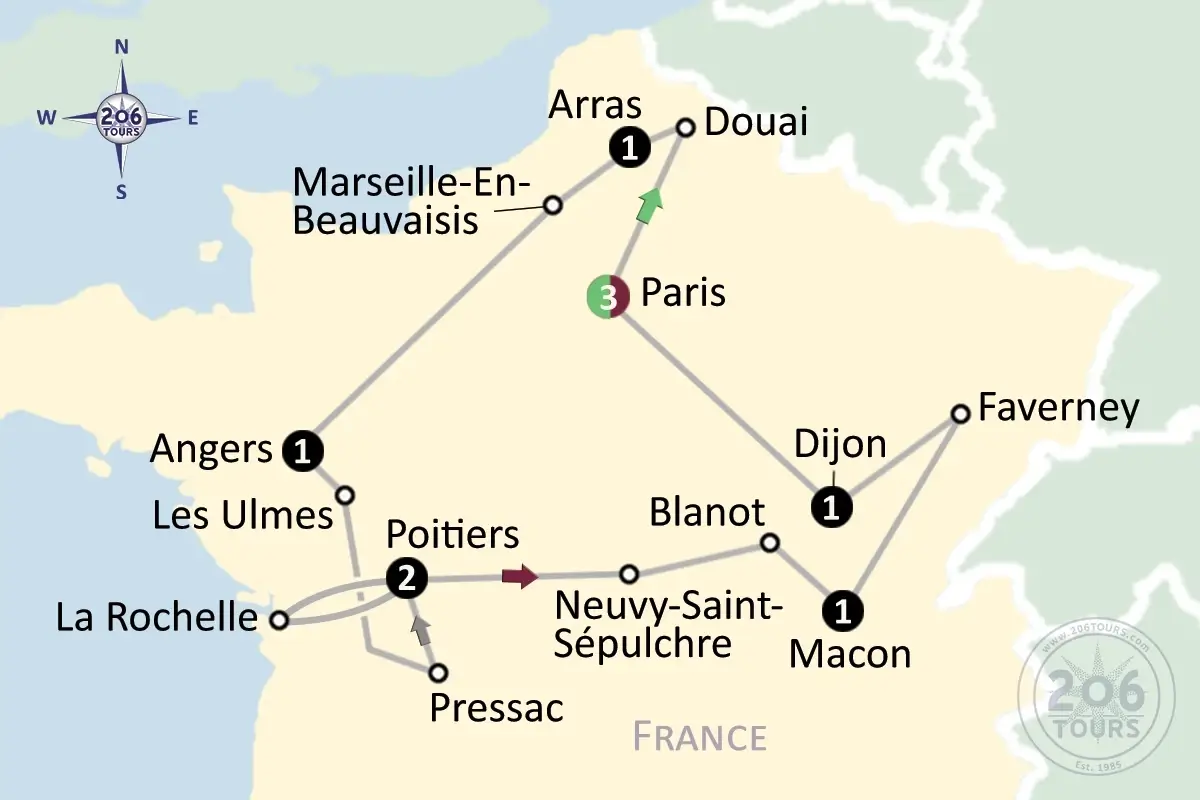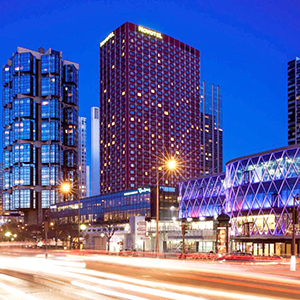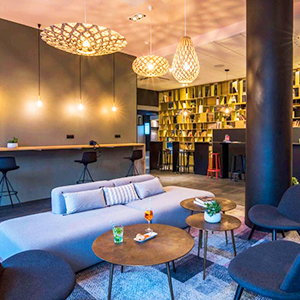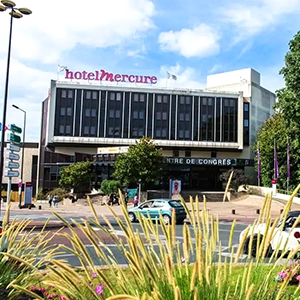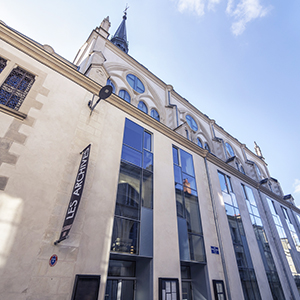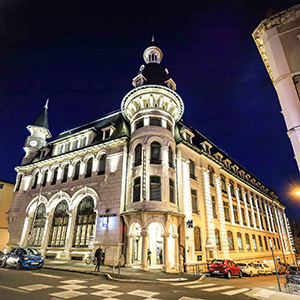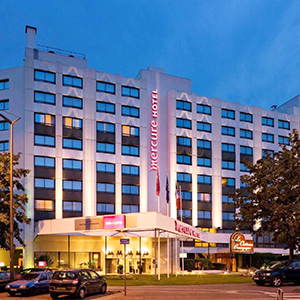Your trip includes
- Round-trip airfare from your desired Airport
- Prepaid seat assignments
- All airport taxes and fuel surcharges
- Hotel accommodations: (or similar) in double occupancy
- ~ 2 nights: Novotel Paris Centre Tour Eiffel, Paris, France
- ~ 1 night: Mercure Arras Centre Gare, Arras, France
- ~ 1 night: Mercure Angers Congress Center, Angers, France
- ~ 2 nights: Mercure Poitiers Centre, Poitiers, France
- ~ 1 night: Panorama 360 Hôtel & Spa, Mâcon, France
- ~ 1 night: Hotel Mercure Dijon Centre Clémenceau, Salzburg, Austria
- ~ 1 night: Novotel Paris Centre Tour Eiffel, Paris, France
- Transfers as per itinerary
- Breakfast and Dinner daily
- Wine and mineral water with dinners
- Transportation by air-conditioned motor coach
- Tour Escort throughout
- Assistance of professional local Catholic Guide(s)
- Sightseeing and admission fees as per Itinerary
- Mass daily & Spiritual activities
- Whispers
- Luggage handling (1 piece per person)
- Flight bag & PDF digital confirmation of all travel documents
Not Included
- Lunches and beverages not mentioned, Tips to your guide & driver.
Itinerary
Day 1: Depart for Paris
Make your way to your local airport, where you will board your overnight flight(s). Meals will be served on board.
Day 2: Arrive Paris
Upon arriving at Paris airport, make your way to the baggage claim area and collect your luggage. Proceed to the arrival hall, where you be greeted by your tour guide and/-or driver. Check-in to your hotel, and then gather together for visit of the chapel of Our Lady of the Miraculous Medal, a high spiritual Parisian place where several apparitions of the Virgin Mary took place in 1830. These apparitions are recognized by the Church. It is a place of peace and silence in the heart of Paris. One can there invoke the Virgin Mary with this prayer “O Mary, conceived without sin, pray for us who have recourse to thee”. It is also the occasion to discover the life of Saint Catherine Labouré to whom the Virgin Mary appeared and to leave with a medal that the daughters of Charity still share with those who they meet. Each pilgrim can come to pray in the same spot of the apparitions or in front of the Saint’s reliquary. After several apparitions of both Saint Vincent de Paul and of Christ, Catherine Labouré had the joy of speaking three times with the Virgin Mary from July to December 1830. The young novice of the daughters of Charity was awakened in the middle of the night and invited to go to pray in the community’s chapel. It was here that the Virgin appeared for the first time. The Virgin asked her to offer to the world a medal for which she gave the details. This object, simple but full of symbolism, profoundly marked the Parisian spirit when the city was hit with a terrible epidemic of cholera in 1832. The daughters of Charity distributed the first medals. Healings and conversions increased more and more. The nuns had then to cope with many requests and it was a true tsunami. Parisians called the medal “miraculous”, the name it still holds today. Just a few blocks away from the chapel of Our Lady of the Miraculous Medal, discover the chapel of Saint Vincent de Paul and the relics of this saint. Through this chapel, pilgrims may pray Saint Vincent who was fervent apostle of Charity. Saint Vincent de Paul was born in 1581 and kept throughout his life the concern for the very poor. Ordained a priest in 1600, he brought together several years later some well-to-do ladies to take care of the penniless and the sick. He also helped slaves and peasants. He was the founder and superior of the community of Lazarists, a group of priests whose apostolic mission is in rural areas. He also founded the community of the daughters of Charity as well as a Mission seminary from which left many priests for Madagascar. He led many projects for the poor in Paris, up until his death in 1660. He was proclaimed a saint on June 16, 1737 by Pope Clement XII. Dinner and night in Paris.
Day 3: Paris
Following breakfast at your hotel visit church of the Blessed Sacrament. The church was acquired by the Congregation of the Blessed Sacrament, founded by Saint Pierre Julien Eymard, to demonstrate the importance of the Eucharist and its adoration. In the Corpus Christi chapel, the saint’s remains are housed in a special shrine, protected by a glass case. Before its installation at Corpus Christi, this shrine housed the remains of Eymard’s friend, the Curé d’Ars. Then, Basilica of St. Mary of Victories, the church was built in the 17th century by King Louis XIII to commemorate military victories, notably the battle of Rocroi in 1643. It was in this church that Saint Julien Eymard first instituted nocturnal Eucharistic adoration.After we will visit one of the most famous churches in the world, the spectacular Cathedral Notre-Dame de Paris. Construction began on the cathedral in 1163, and it was completed in 1345 and awarded minor basilica status in 1805. It is famous for its relics of the Crown of Thorns and True Cross, its tradition of Lent Sermons, its Rose Windows and as the setting of Victor Hugo\’s famous novel The Hunchback of Notre-Dame. After being severely damaged in a fire in 2019, the Cathedral was restored and reopened in 2024. This cathedral was important in the history of the institution of the Congregation of the Blessed Sacrament, as it was the seat of the Paris archeveche. Indeed, Monseigneur Sibour supported the work of Saint Julien Eymard and facilitated the expansion of these communities in France and abroad. Archbishop Sibour is buried in Notre-Dame’s Chapelle Sainte Madeleine, where a statue pays homage to him. Lunch on your own (not included).Continue to Saint Etienne du Mont, a Gothic-Renaissance church near the Panthéon. It houses the tomb of Sainte Geneviève, Patron Saint of Paris. Its spiral staircase and rood screen (a structure separating the nave from the choir) are curiosities for which it is renowned. A stained glass window recounting the Eucharistic miracle of the Billettes can be seen in the Catechism Chapel. The story goes that a poor woman borrowed thirty sous parisis from a usurer of the Jewish faith, and pawned her clothes. Lacking the necessary funds, and wishing to get her clothes back for Easter, she exchanged them for the consecrated communion wafer she had hidden under her tongue. The man pierced the host several times, causing it tobleed, and finally cooked it in a cauldron. The boiling water turned to blood. A neighbor the host and brought it to the priest. The miraculous host was kept as a relic in the church of Saint-Jean-en-Grève until the French Revolution, when it disappeared. Visit to basilica of the Sacred Heart of Montmartre and the amazing view you have over Paris from up there. In 1870, war broke out between France and Germany, and France was invaded. The idea took hold that the ordeals incurred by France were due to its spiritual faults rather than only political ones. This gave birth to the construction of a basilica dedicated to the Sacred Heart of Jesus. This project was seen as atonement and also as the force of hope and spiritual renewal. Parisian and French Christians pledge to maintain there a permanent 24/7 prayer in exchange for the protection of Paris. In 1872, the archbishop of Paris approved theproject and chose the hill of Montmartre for the site. The financing of the edifice was through individual gifts (often modest ones) from people all over France. Their names are engraved in the stone of the basilica. For over a century, Parisians and pilgrims from all over the world relay to maintain the permanent prayer. Montmartre is a hill overlooking Paris north of the river Seine. It’s a lively neighbourhood well known for its ideal location, the romantic charm of its small streets and for the many artists who decided to live here at the end of the 19th century. Its name comes from Saint Denis, the first bishop of Paris, who died as a martyr on the 3rd century. Tradition holds that he and his companions died here giving it its name, that is of Montmartre, “the mount of martyrs”. Adoration hour in the basilica of the Sacred Heart from 9 to 10 pm. Dinner and night in Paris.
Day 4: Paris – Douai – Arras
Breakfast in your hotel followed by transfer to Douai (2h50 – 124 miles) where group will visit Saint-Peter church, site of the Eucharistic miracle. Easter 1254. In the town of Douai, the parish priest of Saint-Pierre church is giving communion to his parishioners, but a host slips out of his hand. As he bends down to pick it up, the host lifts off the ground and lands on the monstrance. Then a child of astonishing beauty appears, and the priest and congregation gaze in amazement. The Bishop of Cambrai immediately went to the site and asked to see the host. He discovered it marked with the face of Christ crowned with thorns, two drops of blood dripping from his forehead. During the French Revolution, the host disappeared. It was not found again until 1854 by the parish priest, hidden under the Christ of the altar of the dead, with a letter written in Latin by his predecessor: “I, the undersigned, canon of the illustrious collegiate church of Saint-Aimé, certify that this is indeed the host of the holy miracle which I have saved from the imminent danger of profanation by collecting it. I have placed it in this ciborium and left this testimony in my own handwriting for the faithful who will discover it later (January 5, 1793).” Lunch on your own (not included).Continue on panoramic tour of Douai : the belfry (a former watchtower used to warn of dangers in the prosperous towns of northern France and Belgium), the Place d’Armes, the historic heart of the town, surrounded by ancient buildings, the Dauphin fountain, and then a tour of the remains of the old fortified town with its canals and remaining ramparts, with the Valencienne gateway. Transfer to Arras for dinner and overnight (40 min – 15 miles).
Day 5: Arras – Marseille -En – Beauvaisis – Angers
Following breakfast we’ll drive to Marseille-en-Beauvaisis (2h00 – 93 miles) where we will visit Marseille-en-Beauvaisis church, site of the Eucharistic miracle. One cold December day in 1532, two thieves slipped into the church of Marseille-en-Beauvaisis and stole a silver ciborium containing the consecrated hosts, which were immediately abandoned under a large stone in the main street. On January 1st, a certain Monsieur Jean Moucque passed down the street in a blast of wind and snow. His attention was immediately drawn to a stone which, despite being exposed to the storm, had not accumulated a single layer of snow. Lifting it, he discovers the hosts, intact. A chapel was erected some time later to encourage devotion, and several miraculous healings took place there, such as that of Jacques Sauvage, a paralyzed priest who was completely healed. Lunch on your own (not included) and transfer to Angers (5h15 – 229 miles). Dinner and night in Angers.
Day 6: Angers – Les Ulmes – Pressac - Poitiers
Today our pilgrimage takes us to Les Ulmes (1h00 – 32 miles) where we will visit Les Ulmes church, site of the Eucharistic miracle.On June 12, 1668, Catholics in Les Ulmes, a small village in what is now the department of Maine-et-Loire, celebrated the Most Holy Body of Jesus Christ. To mark the occasion, Eucharistic adoration was organized in the church. As Father Nicolas Nezan incenses the monstrance while the faithful sing the Pange Lingua, a young man appears in place of the Host. Luminous, dressed in white and with shoulder-length light-brown hair, he stood there, hands clasped, for almost a quarter of an hour. After investigation, the bishop recognized the miracle. The host was kept for many years in a small, specially dedicated niche, and was later consumed by the vicar of Puy-Notre-Dame, who feared it would be desecrated during the French Revolution. After lunch on your own group will continue to Pressac, site of the Eucharistic miracle. Holy Thursday 1643: after mass, the parishioners call the priest in a panic. The flames from the candles left burning had started a fire near the altar. All that remains of the chalice used for communion are the ashes. Or almost. The foot remained intact and the host was found hidden underneath. It was eaten the following day, during the Good Friday liturgy. Proceed to our final destination for the day, Poitiers for dinner and overnight.
Day 7: Poitiers – La Rochelle - Poitiers
Today enjoy the day trip to La Rochelle and visit to La Rochelle Cathedral, the site of the Eucharistic miracle. On Easter Day 1461, a woman brought her son Bertrand, aged 12, to the Mass of the Resurrection in the church of Saint Batholomée, La Rochelle. At the age of seven, Bertrand had suffered an unfortunate fall and had become completely mute. When it came time for communion, little Bertrand made it clear to the priest that he wanted to receive the body of Christ. But the priest refused to give it to him on the grounds that he had not been able to hear the young mute’s confession before taking communion. When the priest refuses, Bertrand insists, gesturing and begging. The priest, moved, gave in and gave him the Eucharist: Bertrand immediately began to speak again. His first words are “Adjutorium nostrum in nomine Domini”, meaning “Our help is in the name of the Lord. The manuscript describing this miracle is still preserved in La Rochelle Cathedral. Lunch on your own followed with time for prayer and reflection. Return to Poitiers for dinner and overnight.
Day 8: Poitiers – Neuvy – Saint – Sepulcre – Blanot – Macon
In the Basilica of Neuvy-Saint-Sépulcre, a relic of two drops of Christ’s blood, collected from Calvary during the Passion and brought back from the Holy Land in 1257, is preciously preserved. It consists of pure, coagulated blood, not mixed with water or soil. After time for prayer and short break for lunch continue to Blanot and visit to Blanot church, site of the Eucharistic miracle. In Blanot, a small Burgundy village Catholics celebrated Easter on Sunday March 31, 1331. At the moment of communion, as the faithful kneel to receive the precious Body, an altar server remarks that a particle of the host has fallen onto a small tablecloth, carried below the ciborium by the altar servers.”Reverend Father, please turn to us as the Body of Our Lord has fallen onto the Communion tablecloth from a lady’s mouth,” the server whispers to the priest. But as the priest approaches, the piece has disappeared… to be replaced by a stain of fresh blood. Stunned, the priest rushed to the sacristy with the doily and set about washing it. The priest returned to the altar and placed the piece of tablecloth in a reliquary, before exclaiming to his parishioners: “Good people, here is the Most Precious Blood of Our Lord Jesus Christ. I have tried everything to wash the cloth and wring it out, but I have not been able to remove the piece of Host transformed into blood from this tablecloth.” Continue to Mâcon for dinner and overnight.
Day 9: Macon – Faverney - Dijon
Today group will visit Faverney Abbey, site of the Eucharistic miracle. In 1608, the Benedictine abbey of Faverney was in a turmoil: several monks were distancing themselves from the Catholic faith as Protestantism spread throughout France. After adoration, the monks left the monstrance and the two consecrated hosts on the temporary altar set up for the occasion. In the early hours of the morning, a cry of stupefaction drew the community together: the altar had been completely reduced to ashes, and the monstrance could not be found. In fact, the monstrance was suspended in mid-air, and the hosts were intact. The monks prepared a new altar and celebrated mass on it. At the moment of elevation, the monstrance, still suspended in the air, begins to descend onto the new altar. This Eucharistic miracle strengthens the faith of both the community and the faithful. One of the two hosts remains intact, while the other was destroyed during the French Revolution. Lunch on your own and transfer to Dijon for visit of Basilica of Saint Michael the Archangel, site of the Eucharistic miracle. In 1430, a woman whose name remains unknown went shopping with a secondhand dealer in the Principality of Monaco. She came away with a beautiful monstrance. When she got home, she discovered a large host that had been left there: the object must have been stolen. Unaware that this precious piece of bread is none other than the real presence of Christ, the woman removes the host with a knife. The host immediately begins to bleed, and an image of Jesus appears, seated and surrounded by the instruments of his Passion. Pope Eugene IV offered the host to Duke Philippe of Burgundy, who in turn donated it to the city of Dijon, then capital of the Duchy of Burgundy. The precious relic is preserved in the Basilica of Saint-Michel Archange. In 1794, as the Revolution continued its bloody course, the miraculous host was burned by five agents of the Conseil Communal. A star was drawn in front of the church of Saint-Michel, where this terrible sacrilege took place. Dinner and overnight in Dijon.
Day 10: Dijon – Paris
This morning enjoy a panoramic tour of Dijon and visit the cathedral, a blend of Romanesque and Gothic architecture, with highly detailed sculptures on its facades. Inside the cathedral are the tombs of the Dukes of Burgundy Jean-Sans-Peur and Marguerite of Bavière. See by the outside the Palace of the Dukes of Burgundy which reveals Burgundy’s past splendor. The palace was the residence of the Dukes of Burgundy. Today, the palace houses Dijon’s Musée des Beaux Arts, exhibiting a fine collection of works of art. This afternoon transfer to Paris – farewell dinner and overnight in Paris.
Day 11: Paris Airport – USA
Following breakfast in transfer to Paris airport for your return flights home.
*206 Tours Disclaimer:
Occasionally local religious and national holidays, weather, traffic conditions and other events may necessitate changes in the sequence of events or the missing of certain events/places. Though every effort will be made to follow the itinerary, it should be considered as an indication, rather than a contract of events and places to be visited.
Would you like to arrive earlier or stay later?
Let us know at the time of registration if you would like to arrive earlier, or stay later, than the scheduled tour dates, and pending availability, we will change your airline reservations accordingly, additional fees may apply. Pre- and/or post-stays at the hotel will cost an additional fee. These options should be available to you when registering online, or simply contact us: sales@206tours.com
